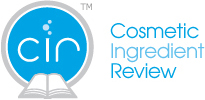How Does CIR Work?
The CIR Procedures established an Expert Panel to set priorities and review and assess ingredient safety data. The seven CIR Expert Panel voting members are physicians and scientists who have been publicly nominated by consumer, scientific, and medical groups; government agencies; and industry. Expert Panel members must meet the same conflict of interest requirements as individuals serving on FDA advisory committees. Three liaison members serve as nonvoting members representing government, consumers, and industry. With participation of these liaison representatives from FDA, CFA, and the Council, the CIR Expert Panel creates a unique forum for open discussions on issues affecting public safety.
CIR staff members conduct extensive literature searches, compile data, and prepare draft reports on high-priority ingredients. They organize the literature into several categories: chemistry (including physical properties and manufacture), use (cosmetic and non-cosmetic), general biology (with absorption, distribution, metabolism, and excretion data), and animal toxicology (acute, short-term, subchronic, and chronic studies, as well as dermal irritation and sensitization data).
The staff also prepare a clinical assessment of the ingredients that may include epidemiologic studies, along with classic repeated insult patch tests. In vitro test data are also gathered and incorporated into the review.
At each stage of the process, CIR seeks the input of all interested parties during a formal 60-day comment period.
If the open scientific literature contains insufficient information, the Expert Panel will call on industry or other interested parties to provide unpublished data or to undertake specific studies. After multiple opportunities for public comment and open, public discussion, a final safety assessment is issued.
The Panel may make one of four basic decisions regarding an ingredient:
Safe ingredients - Ingredients safe in the practices of use (product categories) and concentrations of use for each product category as documented in the safety assessment.
Unsafe ingredients - These are ingredients with specific adverse effects that make them unsuitable for use in cosmetics.
Safe ingredients, with qualifications - The Panel may reach the conclusion that an ingredient can be used safely, but only under certain conditions. Qualifications frequently relate to maximum concentration, but may also address rinse-off versus leave-on uses and other restrictions.
Ingredients for which the data are insufficient - If the Panel reaches an "insufficient data" conclusion, it does not state whether the ingredient is safe or unsafe. The Panel is, however, describing a situation in which the available data do not support safety. The specific data that would allow the Panel to complete its assessment always are identified.
CIR safety assessments are made available as monographs and are published in the International Journal of Toxicology. Each year, CIR publishes the CIR Compendium, a comprehensive collection of findings from all CIR reports.
Recognizing that new information may be available on safety assessments completed years ago, the Expert Panel may re-review of assessments that are more than 15 years old or for which there is some new information known to the Panel. If there are relevant new data, the Panel will consider the need for an amended safety assessment. If the search for newly available data fails to uncover information relevant to ingredient safety, or if the new data duplicate information already in the safety assessment, the Expert Panel will not reopen the safety assessment.
Questions or comments can be directed to CIR staff at cirinfo@cir-safety.org.

